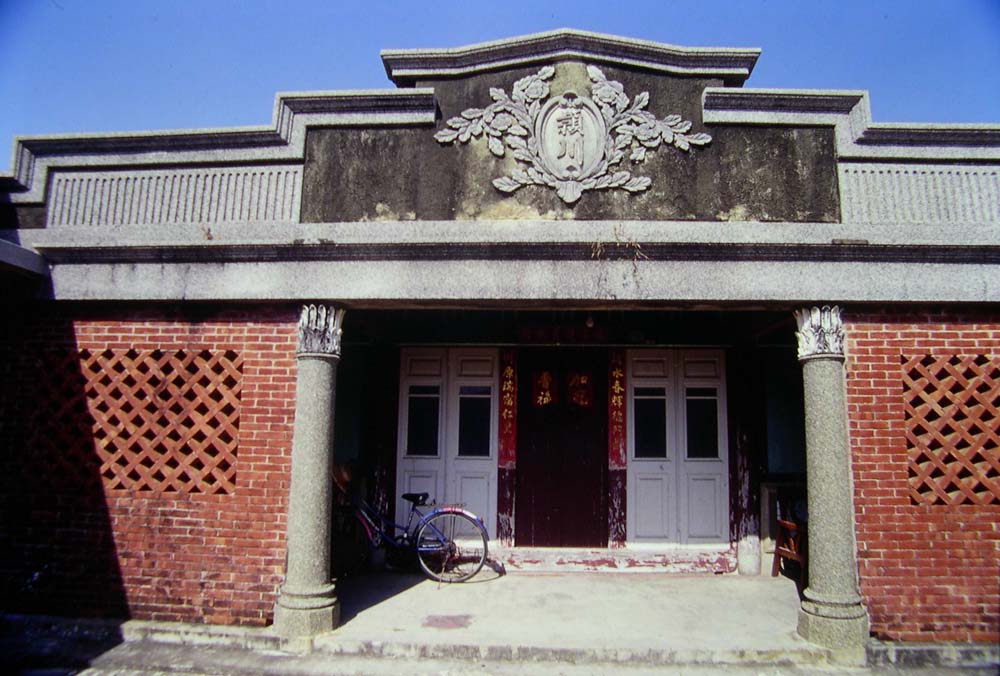 Cigu District is composed of settlements on plains located at the southwestern side of Tainan City. It is bordered by Jiali District, Sigang District to the east, Taiwan Strait to the west, Jiangjyun District to the north, and Annan District across the Zengwen River to the south. Cigu District measures 12 km from north to south and 11 km from east to west. The shape of the District is trapezoid, being narrower in the north and wider in the south. The etymology of Cigu District is reputedly derived from over 360 years ago when 7 settlers from Fujian Province of China arrived at the area. These 7 settlers worked the land together and built a fishery which was called Ciguwen (Seven-Share Fishery), which later gave rise to the name of Cigu. During the Japanese Governor Generalship, the area was renamed as Cigu Zhuang. After World War II ended, it was referred to as Cigu Village instead. The area of jurisdiction once included the 2 regions of Tuchengzai and Cincaolun of Annan District alongside the southern bank of the Zengwen River. In 1946, Annan District formally came under the jurisdiction of Tainan City. In December 25, 2010, the county and city governments were merged, and the entire Cigu area was renamed as Cigu District.
Cigu District is composed of settlements on plains located at the southwestern side of Tainan City. It is bordered by Jiali District, Sigang District to the east, Taiwan Strait to the west, Jiangjyun District to the north, and Annan District across the Zengwen River to the south. Cigu District measures 12 km from north to south and 11 km from east to west. The shape of the District is trapezoid, being narrower in the north and wider in the south. The etymology of Cigu District is reputedly derived from over 360 years ago when 7 settlers from Fujian Province of China arrived at the area. These 7 settlers worked the land together and built a fishery which was called Ciguwen (Seven-Share Fishery), which later gave rise to the name of Cigu. During the Japanese Governor Generalship, the area was renamed as Cigu Zhuang. After World War II ended, it was referred to as Cigu Village instead. The area of jurisdiction once included the 2 regions of Tuchengzai and Cincaolun of Annan District alongside the southern bank of the Zengwen River. In 1946, Annan District formally came under the jurisdiction of Tainan City. In December 25, 2010, the county and city governments were merged, and the entire Cigu area was renamed as Cigu District.
300 years ago, the entire Cigu District used to be a wilderness. Most residents were migrants from Zhangzhou or Quanzhou of Fujian Province who followed Zheng Chenggong three centuries ago in his campaign to end Dutch colonial rule in Taiwan. These pioneers first settled at Xiaolong Zhuang (modern day Jiali District near Jintangdian Temple). After 80 years, the settlers have begun to occupy the northern part of Cigu District. During that time, Cigu was only home to a single port named Hougang (behind the port) as the residents literally lived behind the port. Most of these residents fished for a living. The population started to grow and move inland. The settlers cleared the forests to create farms for cereal crops as well as salt pans. Residents in
mid-southern parts of the district had a different history compared to those in the north. At about 380 years ago, migrants from Quanzhou settled at Puding, Hanliao, Daliao, Yanchengdi, Gangqian, and Gangnan (modern-day Hanliao Borough of Jiali District as well as Daliao and Dacheng Borough of Cigu District). These settlements were involved in aquaculture as well as salt pans. About 230 years ago, the flooding of the Caitou River destroyed many salt pans. Many residents were thus forced to disperse and settle in central and southern parts of the district.
After World War II, a total of 25 villages were formally established in Cigu District. In 1978, Gangdong and Gangxi villages were merged to form Hougang Village, while Dingtan and Taitan villages were merged to form Datan Village, reducing the number of villages to 23. Cigu District can be largely divided into Northern Cigu, Central Cigu, and Southern Cigu. Southern Cigu included the 9 villages of Sangu, Shifen, Yongji, Yihe, Zhuqiao, Zhugang, Shulin, Kanping, and Kanglang. Central Cigu included the 8 villages of Dacheng, Yucheng, Longshan, Zhongliao, Yancheng, Daliao, Xinan, and Cigu. Finally, Northern Cigu included the 6 villages of Xiliao, Dingshan, Datan, Dujia, Hougang, and Chengnei. These villages were later upgraded to boroughs after Tainan County and Tainan City were merged in 25 December 2010.
On January 29 2018, villages and neighborhoods were adjusted, and the District governs 18 villages covering 154 neighborhoods in result. Hougna Village and Chengnei Villiage were combined to become Hougna Village; Dacheng Village and Daliao Village were combined to become Dacheng Village; Kanping Village Shulin Village were combined to become Shulin Village; Zhugang Village and Zhuqiao Village were combined to become Zhuqiao Village;Yihe Village and Kanglang Village combined to become Yihe Village.